It took just 20 minutes for my stomach to flip. Nearly done with my first cup of coffee and midway through introductions with Leo, Jeffery, and Jose, I grabbed the rails and prepared to vomit. My half-digested bowl of Honey Bunches of Oats would soon be fish food.
Despite a double dose of Dramamine and a pinky promise to myself that I would hold it down, I was struggling with the back-and-forth lurching of the boat. And we had just left the harbor.
Discovery Channel’s Deadliest Catch has given Alaskan crabbing a rugged reputation. Howling winds, perpetually pissed-off captains, and 800-pound crab pots flying around like Frisbees make for must-see TV. I intuitively knew that a lot of the show is Hollywood embellishment and crafty editing, but didn’t have any other data points to base my expectations on. I mean, how bad could it really be?
With a mix of curiosity and stupidity, I said yes to a week on the F/V Silver Spray, one of just 60 boats that harvest crab in the Bering Sea in the dead of winter. Preparing for the worst, I packed a backpack full of warm layers and wool socks, and emptied the local pharmacy of seasickness medications. The weather report for the week ahead was best described as bleak to downright grim. As a native Minnesotan and avid backcountry skier, I told myself that I could handle it, and refused to look again.
Still I couldn’t help but look at the news of a similar boat, the Scandies Rose, that sunk in big seas just weeks prior. This is not a common occurrence, but it made me nervous nonetheless—especially with similar seas and conditions forecast. Naturally, I didn’t tell my mom about the projected 20-foot waves and 40 mph winds.
On assignment with Norwegian manufacturer Helly Hansen, my task was to take a few photos of the crew as they filled the boat with crab and brought it back to the processing plant. Based in Oslo and best known for their sailing and ski patrol apparel, HH is a reputable brand in Europe and in the professional world, but lesser known in the States. I packed a set of their bright orange offshore fishing gear for myself—waterproof bibs and a burly rain jacket—along with neoprene-insulated boots, and borrowed a waterproof camera cover from a friend, not knowing what I had gotten myself into.
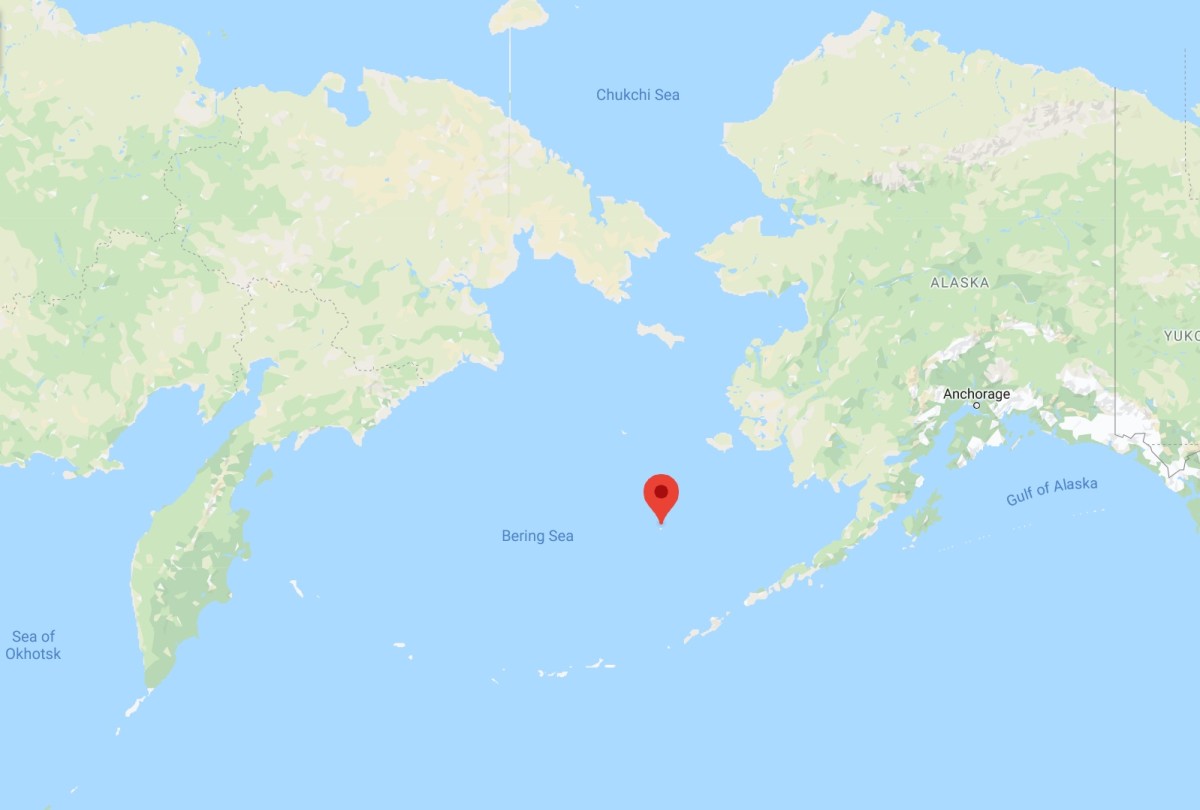
I flew commercial to Anchorage, then hopped on a small twin-prop to the remote island of St. Paul. Arriving late, I got a room at the dingy airport hotel, the island’s one and only lodging option, King Eiger. The island sits halfway between Alaska and Russia, is just 40 square miles, and home to 500 Aleut Natives. With harsh winters and plane-only access, it’s sustained exclusively on fishing.
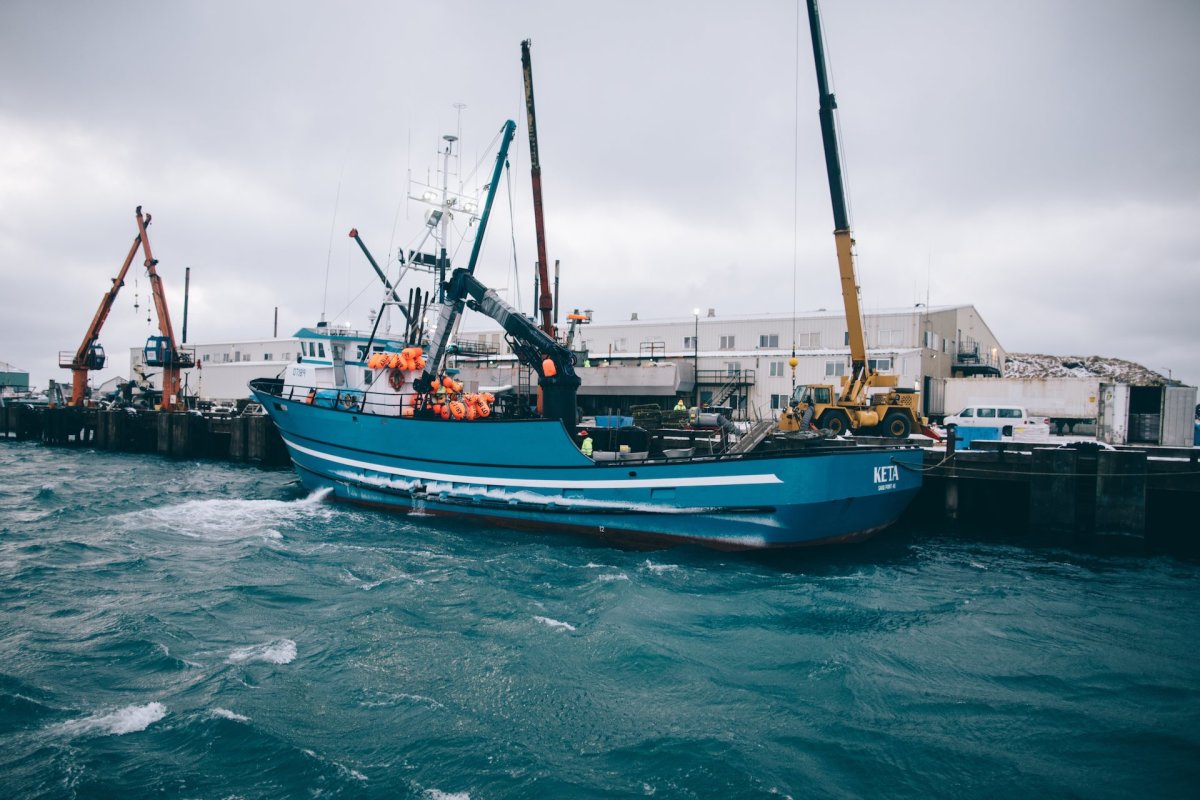
The next morning I got a call at 6 a.m. The boat was back in port and was starting to unload crab. The island doesn’t have taxis, but the processing plant, Trident Seafoods, sent a shuttle. I hurriedly collected my gear and was soon on the docks, awestruck. Large onshore cranes lowered massive, cylindrical bags into the boats’ hold. A small group of workers would load crab into the large bags, all by hand. Once full, the crane would deposit the goods inside the plant. I watched the process unfold, amazed at the volume of crab and its manual nature.
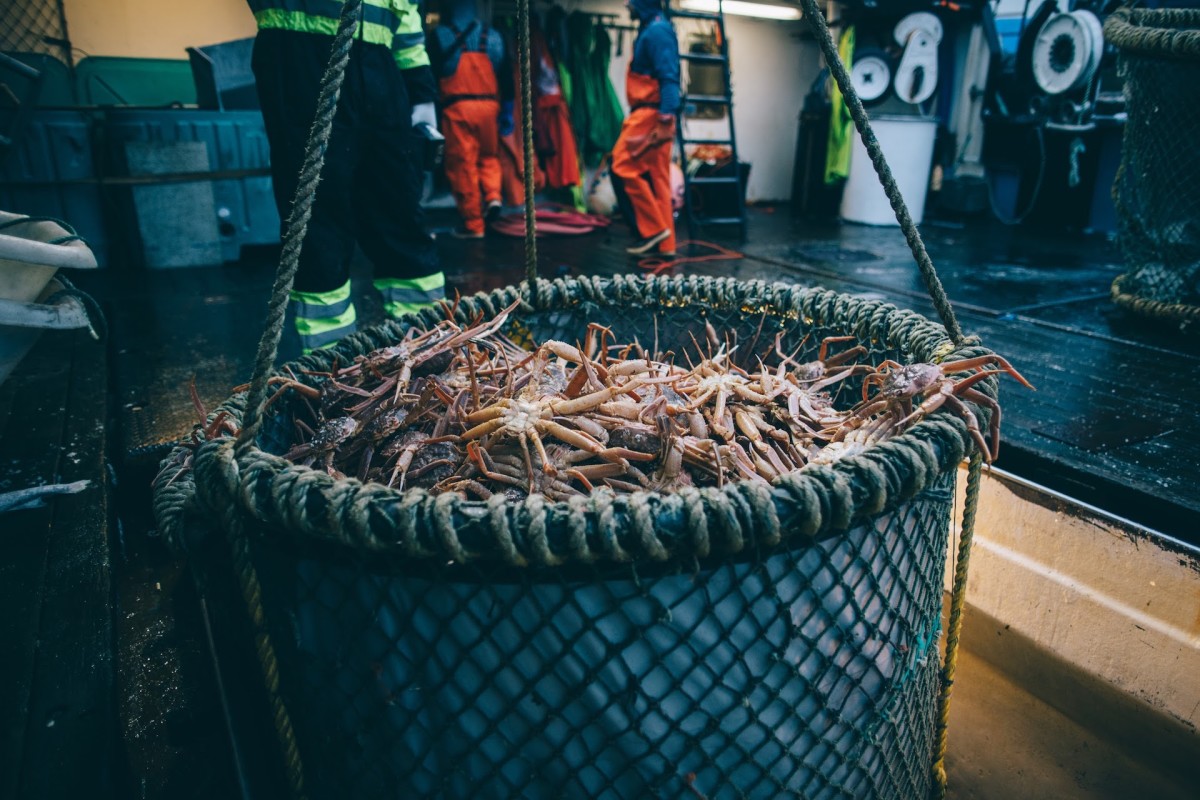
Like a deer in the headlights, I stood frozen until a friendly face appeared and said, “You must be Andy, welcome aboard!”
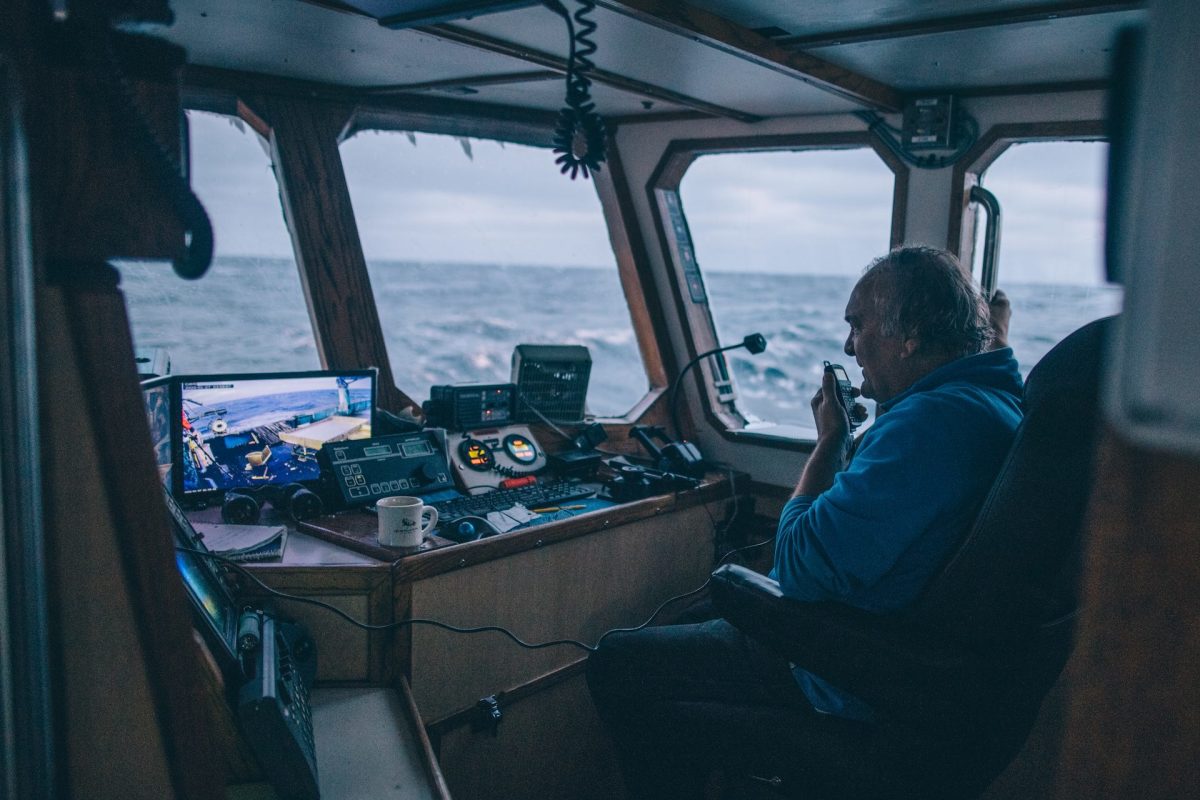
The Silver Spray is a 116-foot-long crabbing boat, based out of Kodiak, Alaska, and run by a salty yet mild-tempered captain, Bill Prout. For more than four decades Prout has fished crab, often spending half a year on the boat. He currently employs a crew of six, including three of his sons, Gabe, Sterling, and Ashlan. The boat is owned by the Prout family and can transport a quarter-million pounds of crab at a time, which they collect from a couple hundred pots hidden 80 or so miles offshore.
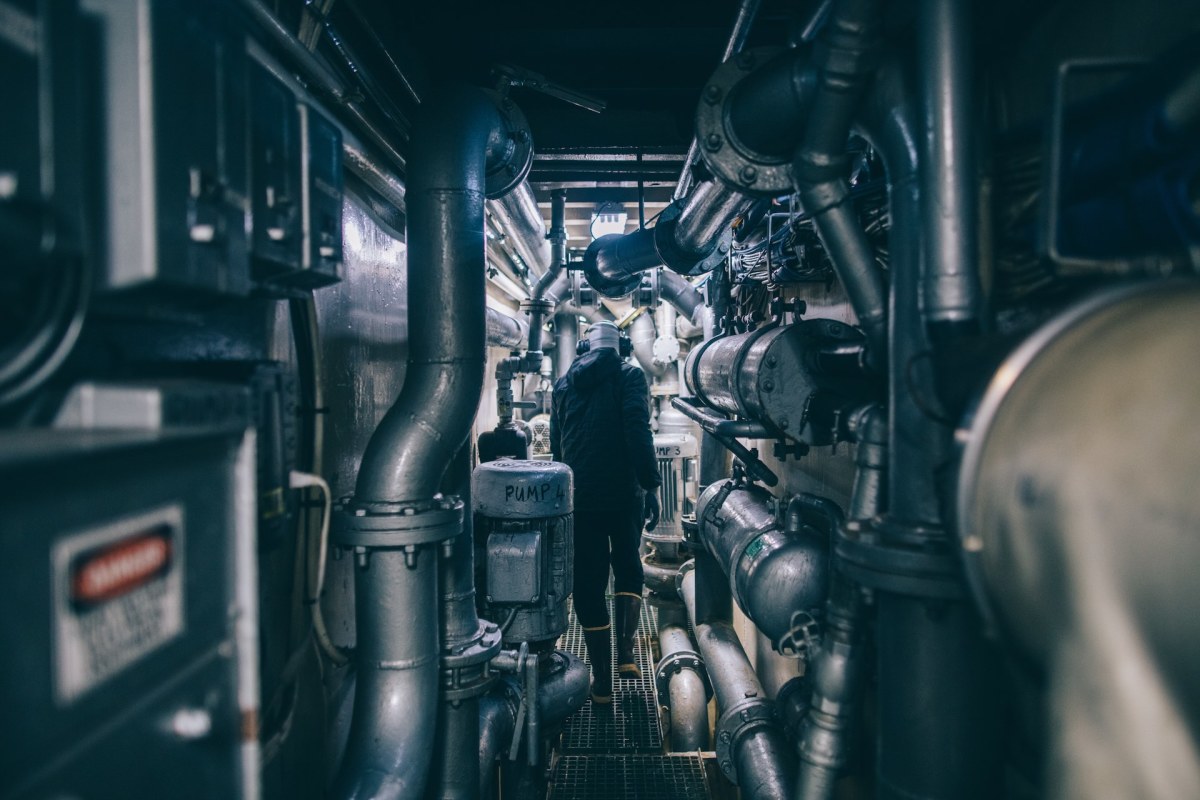
Following Sterling on a quick cabin tour, I began firing questions and furiously scribbling his responses and taking stock of the galley: loaded kitchen with walk-in freezer, long table for eight-plus diners, three small sleeping quarters. I dropped my gear on a top bunk and headed to the helm, to meet the brothers.
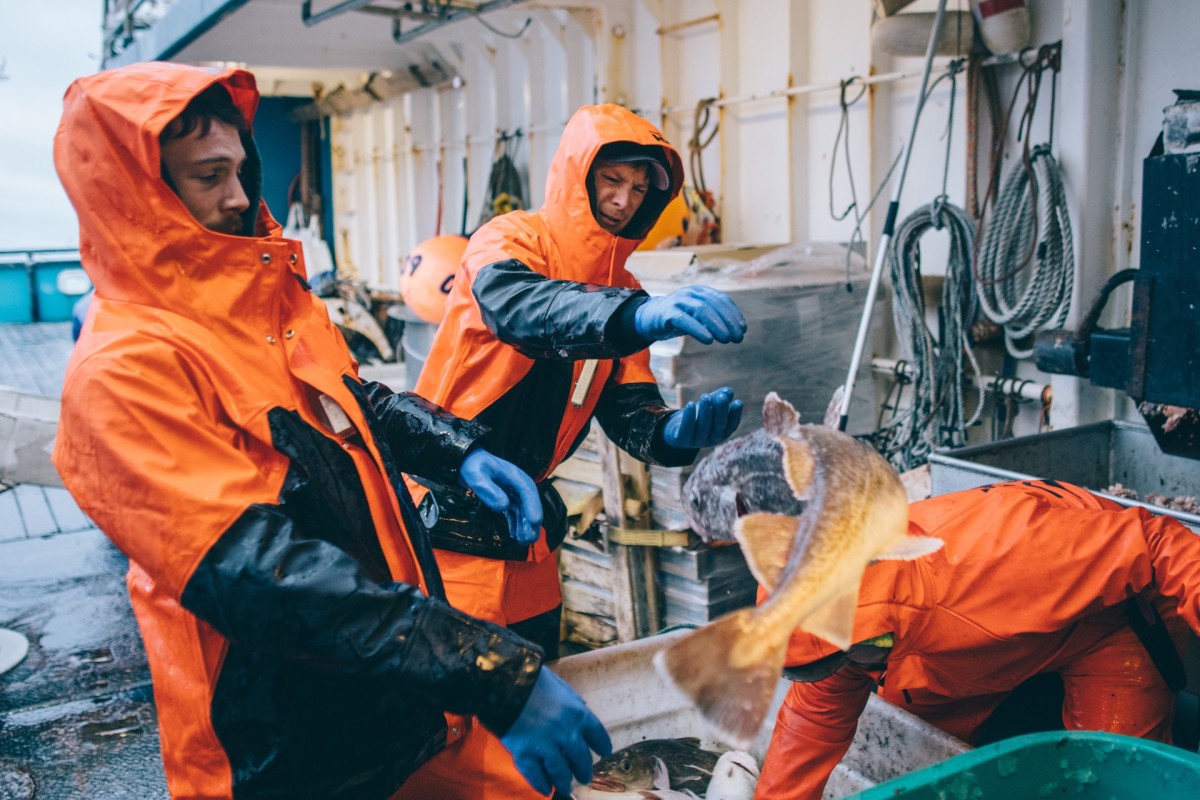
Three hours later, the sun began to rise and the unloading process still had not finished. I started to realize the scale of this industry, even through the narrow lens of this remote Alaskan port. The small fleet of boats based on Saint Paul supplies the snow crab sold in all North American restaurants and groceries. Just 400 deckhands hand-sort all of the crab that half a billion people eat each year.
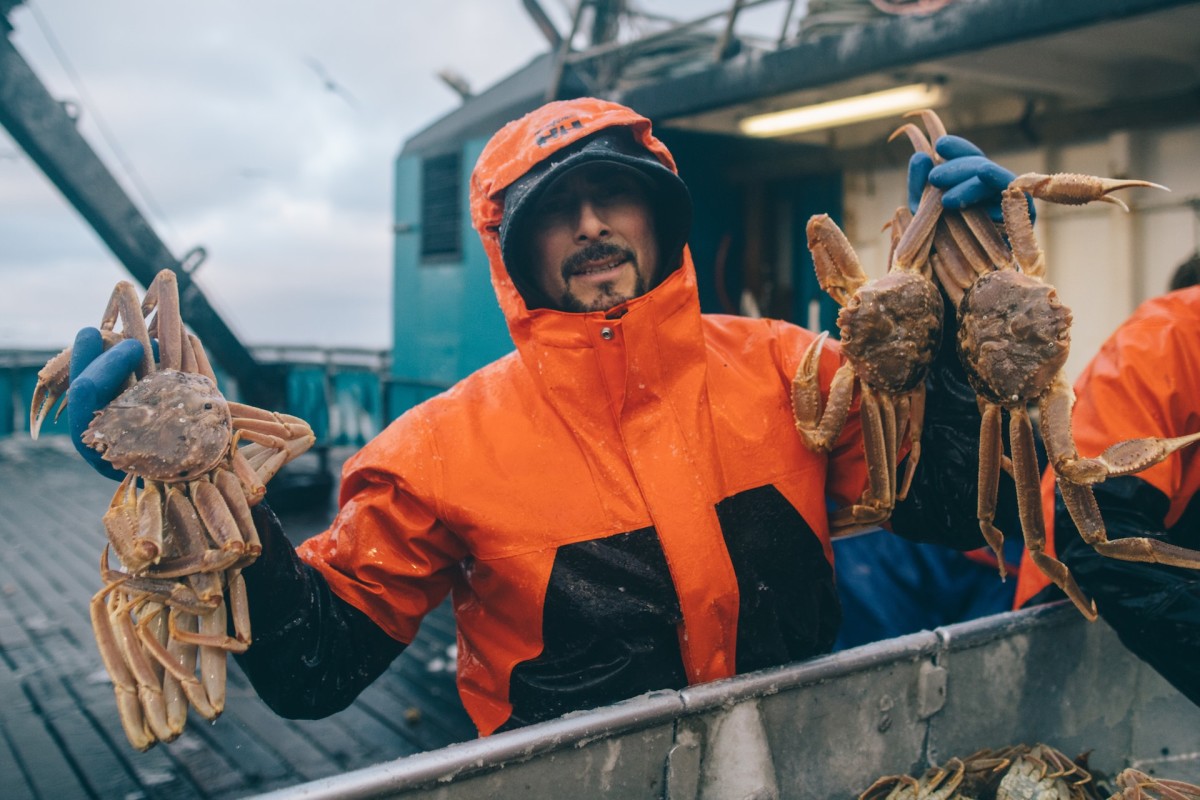
Finally empty of crab, the boat filled up on diesel—nearly 2,000 gallons—plus freshwater for showers and cooking, and two pallets of bait, which each weigh a ton. The crew untied the dock lines and unceremoniously pushed off, letting another boat take our place. With winds gusting close to 30 knots and seas heavy seas forecast, we motored around the breakwall and headed south, back to the crabbing zone. I was fully committed.
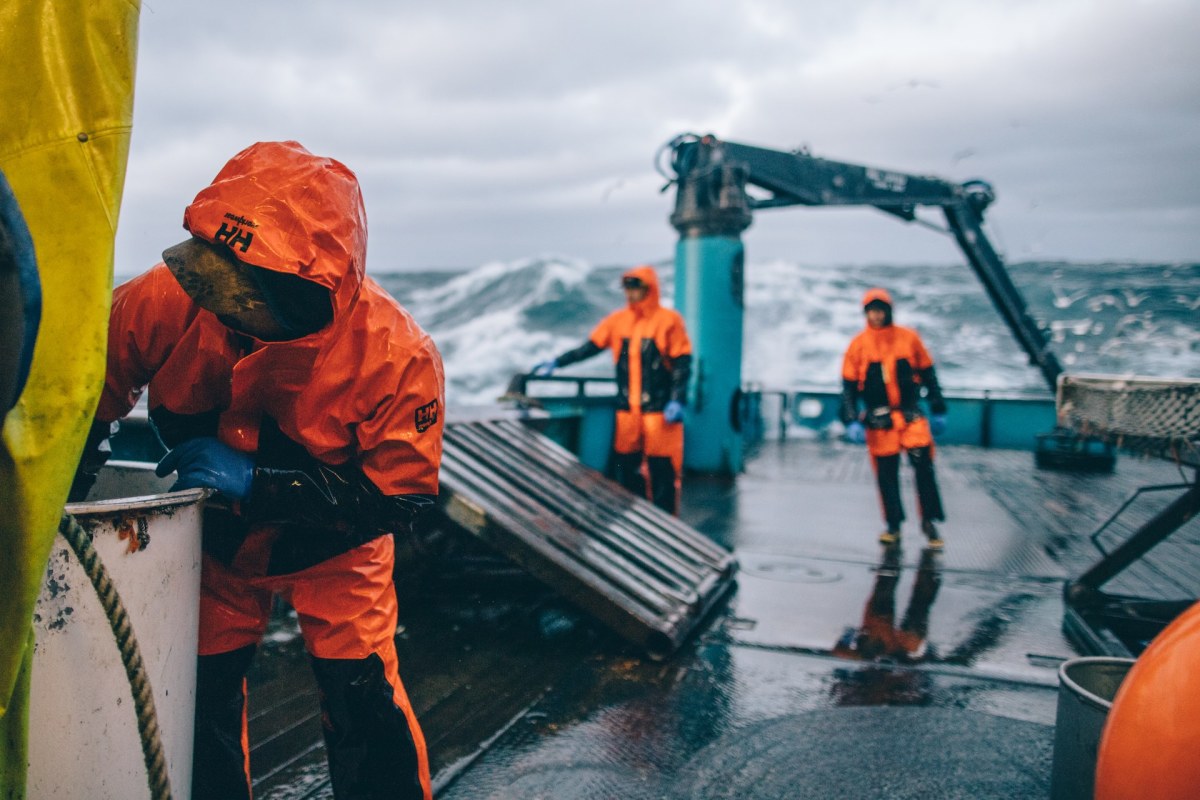
With a top speed of 9 knots, we had a few hours to kill before the real work started. Worried that eating more would make me throw up again, I downed some water and walked back to Leo, Jeffery, Jose, who graciously taught me what to expect when we started pulling pots. With 50 years of crabbing between them, each wore a sly grin when I told them this was my first time on a boat.
I was curious how these guys found their way to the industry and how they hadn’t burned out. Attrition is incredibly high, for obvious reasons—freezing temperatures, rough seas and long, exhausting hours. All three laughed off my greenhorn question, and we returned to tips on how I would survive the week.
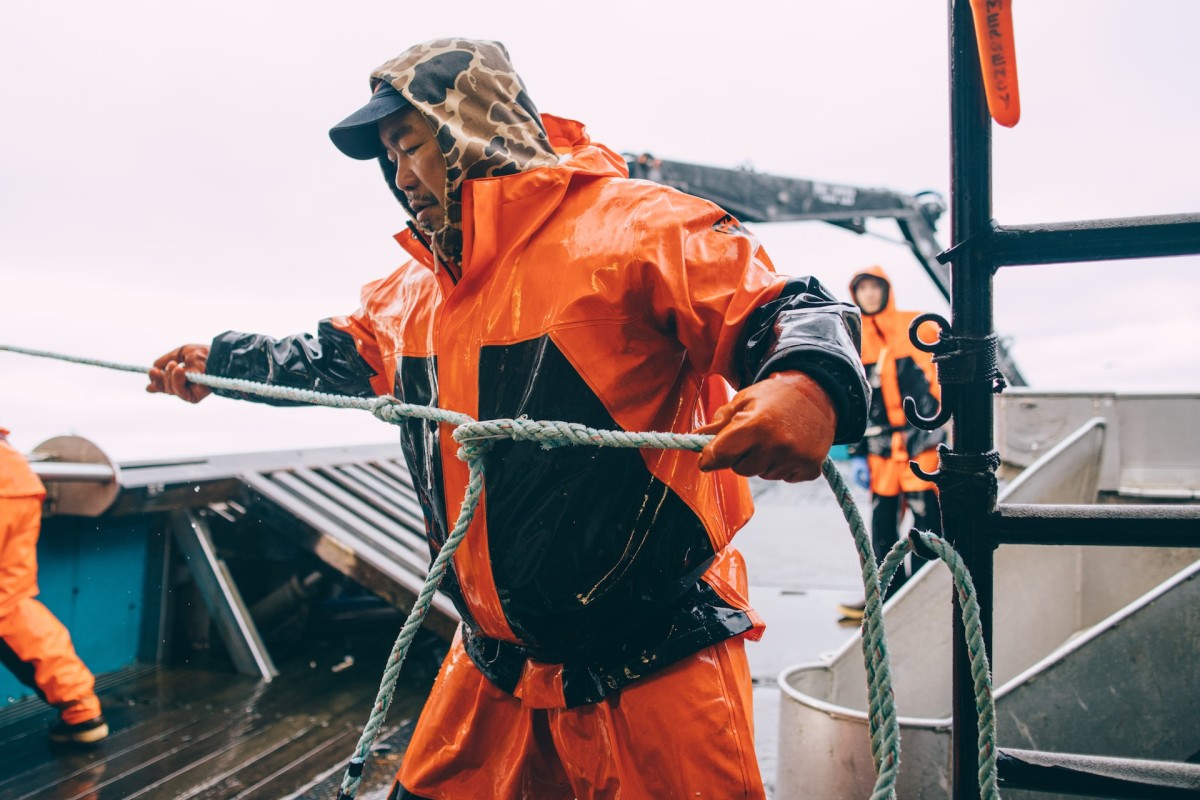
Jose, an immigrant from El Salvador and father of two, has lived in Anchorage since the ’90s. Quiet, always smiling, and always working, he’s fished his entire career. Leo, raised in Samoa and now living in Vegas, also has two kids. Even with frozen fingers and toes, he never stopped making jokes. Jeffery, who lives half the year in the Philippines with his wife and three kids, would often give me a fist bump and say “you’ll be all right, everyone goes through this” after I puked, which happened 11 more times the first day.
By early afternoon the party started. The process was physical, fast, and exquisitely timed among the crew on deck. And it was repeated every seven or eight minutes, with a new pot.
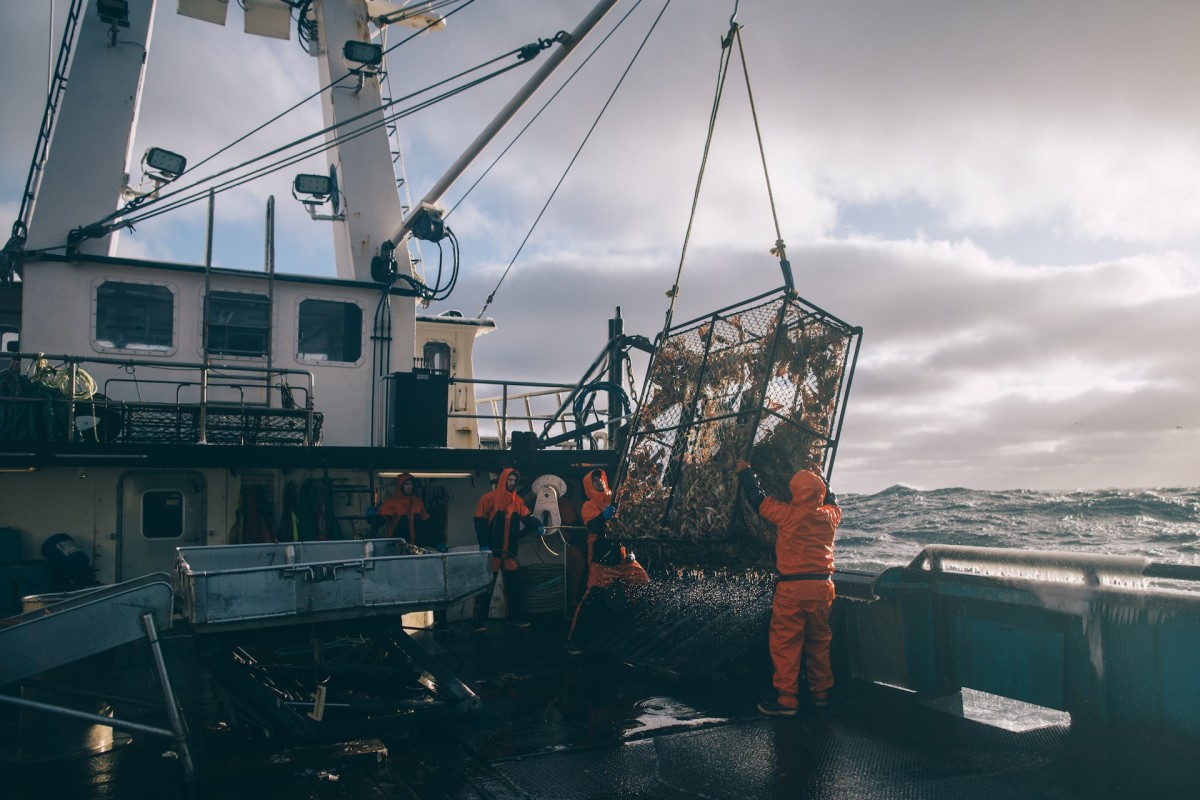
Throw a large metal hook over a set of buoys and pull them in. Loop the rope around a pulley-like machine which hauls in the pot. Once partially above water, hook the pot again, this time with a hydraulic crane. Carefully operate the crane and set the pot horizontal on deck. Open it, empty a couple hundred pounds of crab onto a sorting table, put new bait inside, lash it shut, push it overboard, and throw the buoys back in. Meanwhile, sort the crab before the next pot was hauled on deck. Females and undersized crabs go back into the ocean, large males go into the hold.
Repeat.
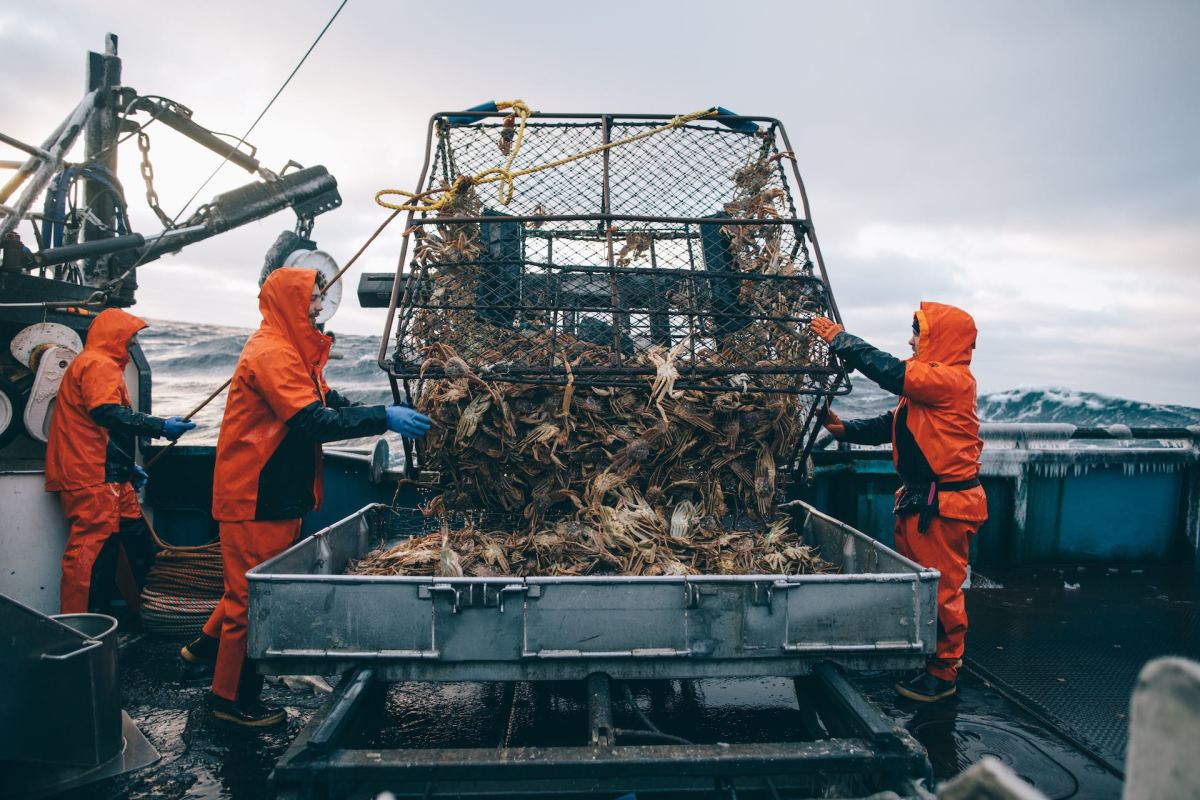
Crab pots are laid out in “strings,” typically 15-20 pots long in a straight line, for easier retrieval. Dropped a quarter-mile apart and 600 feet deep, each string takes a couple hours to run through. A good one can yield 5,000 pounds of crab and a poor one much less. The crew rarely takes breaks for the full string, even for a gulp of water.
In 20-degree weather, stiff winds, icy decks, and large swells, sea legs take on a whole different meaning on the Bering Sea.
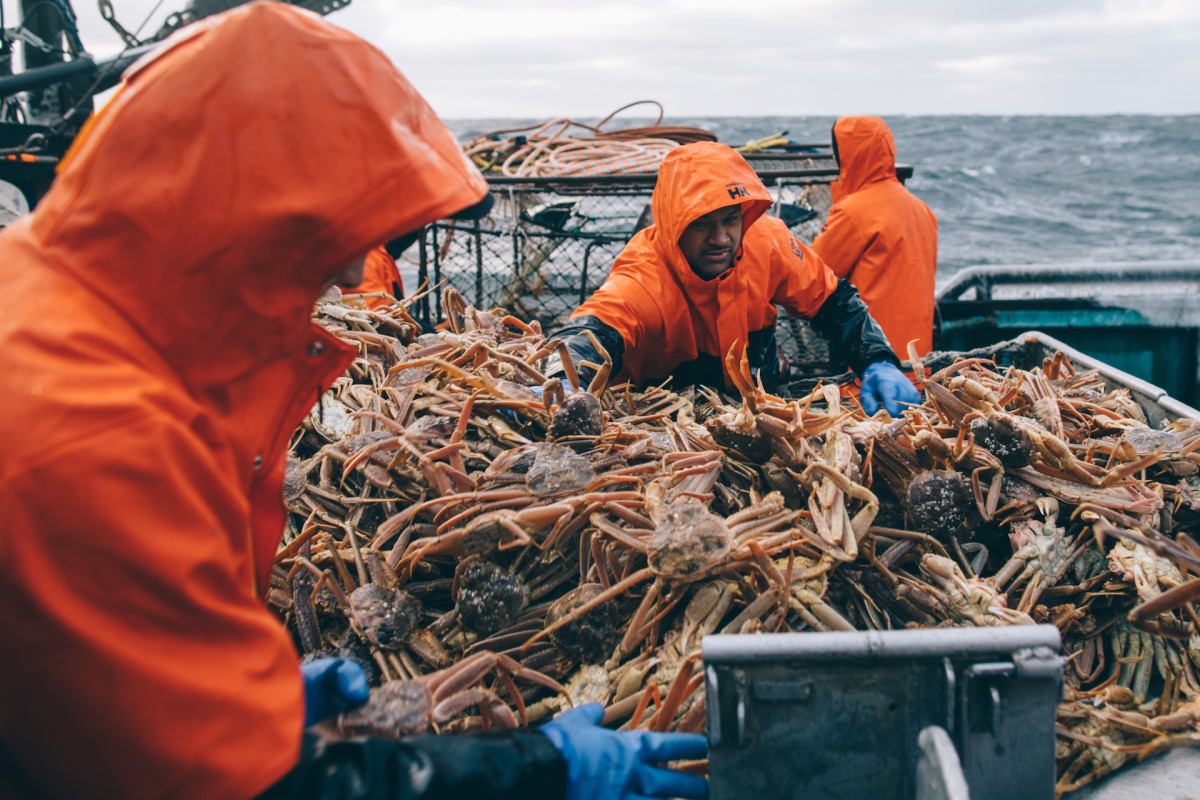
Due to high operating costs and short seasons bounded by federal regulations, the Silver Spray crew works 18 hours each day, or more. From 6 in the morning until at least midnight they pull pots and sort crab, then take a shower, make a communal dinner, and go to bed. Not once did I hear any of them complain. In fact, much the opposite. This group was as proud, positive, and hard-working as it gets.
Four days later, with a boat loaded full of crab, we started the journey back to port. Eager for solid ground and a normal schedule, I put my camera down and sat in the helm, asking questions to Ashlan and Gabe.
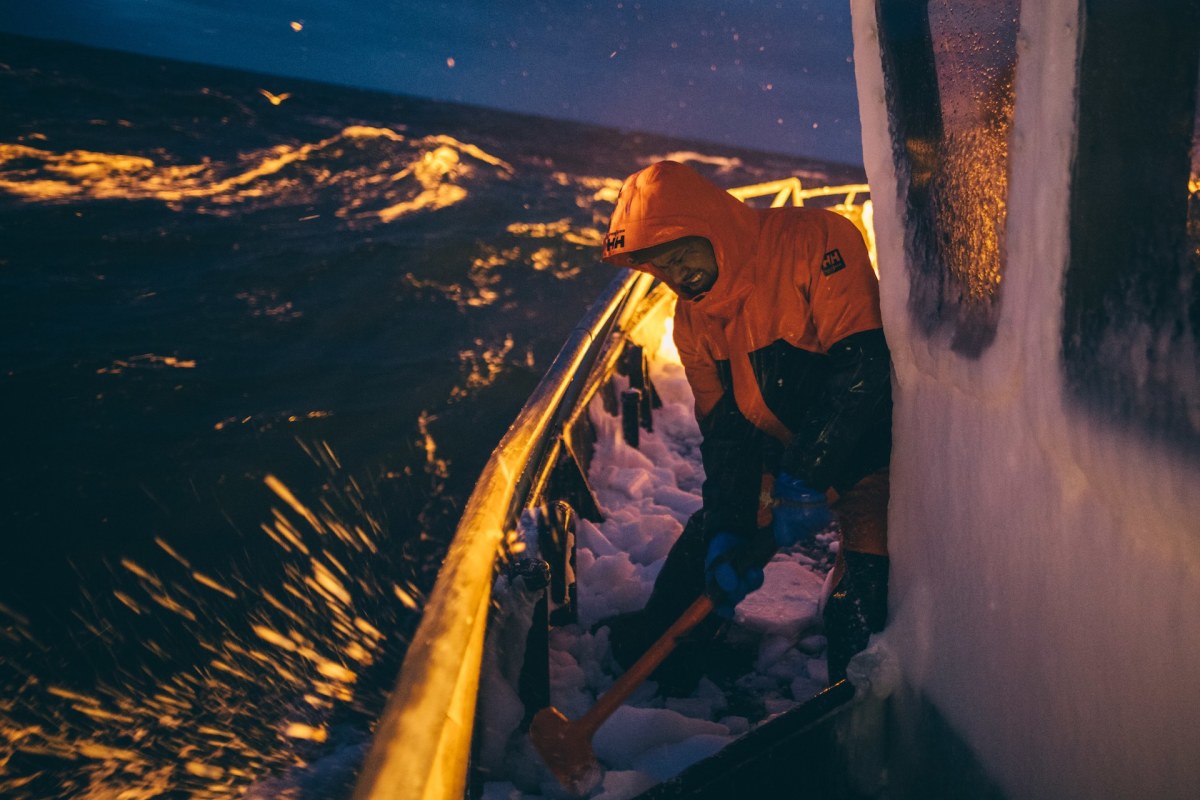
How could a crew that worked this hard in horrible conditions stay perpetually happy? Sure, part of it was the payoff—you make a lot of money in a short period of time while crabbing—but that didn’t explain all of the camaraderie. Both brothers had followed their father into crabbing after they finished college and considered other careers. Musing to myself, Bill spoke up and gave me the answer.
“We’re all family. We run this operation like a family and we treat everyone on the boat like family. It wouldn’t work any other way.”
A few hours later, I disembarked, fully restraining from kneeling to kiss the ground. I was weak, often skipping meals from sea sickness, and ready for my own bed. Grateful for the hospitality, I flew home in a reflective state, struck by how tirelessly the crew worked. I have endless respect for these guys, who just 12 hours later, would head out for another weeklong tour in the middle of the Bering Sea.
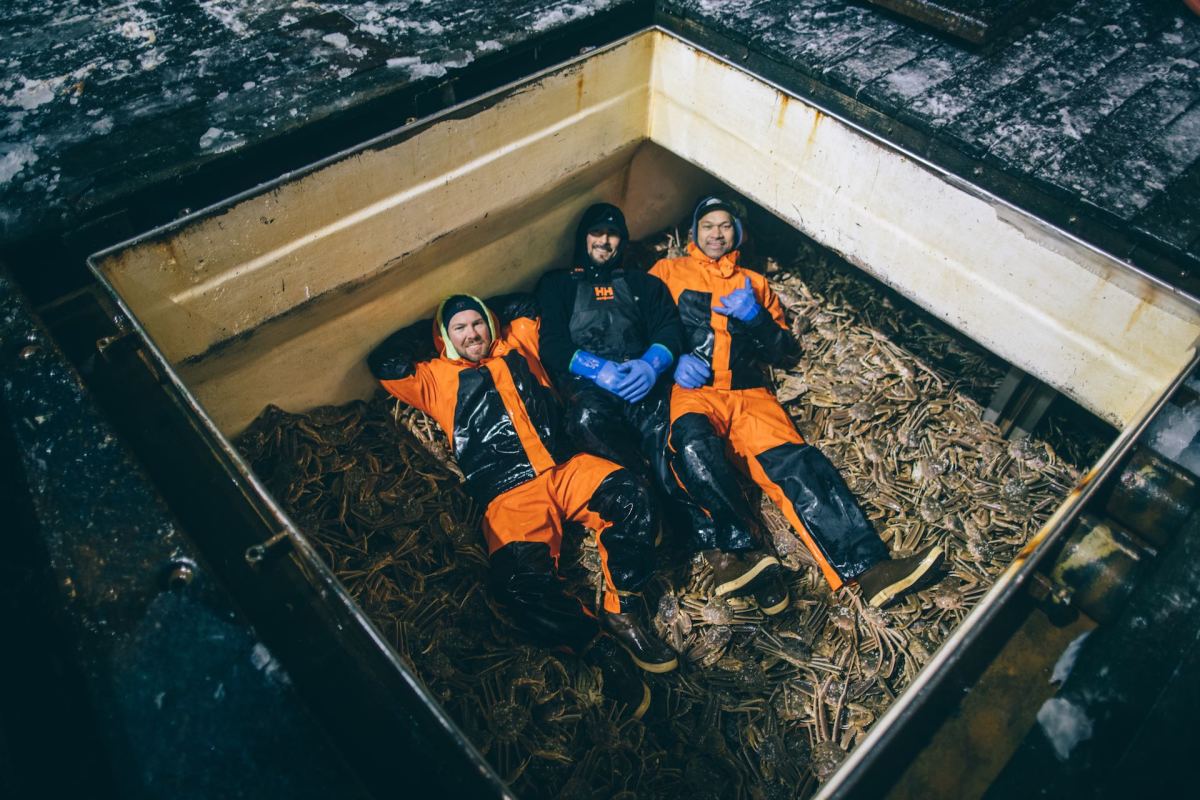
— See more recent dispatches from Cochrane, including covering the Baja 1000, and during an emergency canyon evacuation deep in the Mexican jungle.
from Men's Journal https://ift.tt/2vJcp4Q
No comments:
Post a Comment